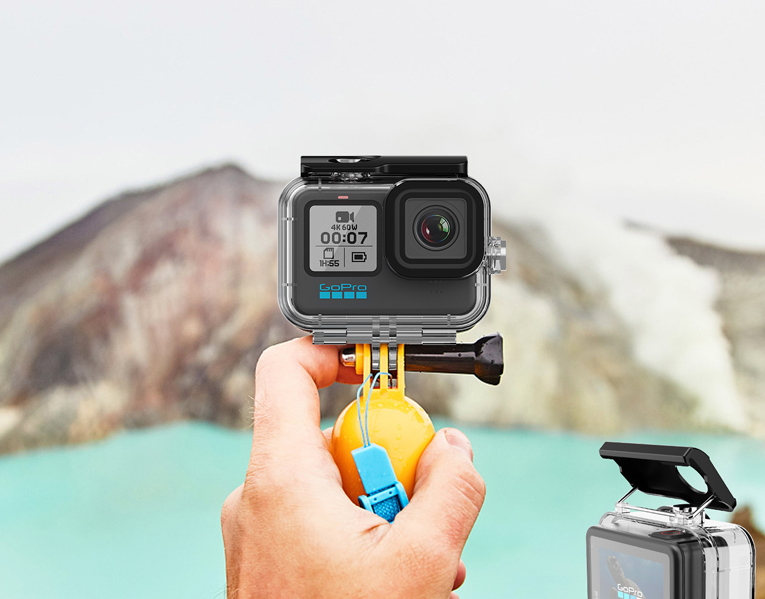
Action cameras have become essential tools for capturing thrilling moments during outdoor adventures. To ensure the longevity and optimal performance of these devices, many users opt to protect them with action camera protectors. Among the various types of protectors available, hard plastic protectors offer a durable and reliable option. This essay will discuss the pros and cons of using a hard plastic action camera protector, considering factors such as durability, protection, usability, aesthetics, and potential drawbacks.
I. Pros of Using a Hard Plastic Action Camera Protector:
- Durability: One of the primary advantages of a hard plastic action camera protector is its durability. Hard plastic materials, such as polycarbonate or acrylic, are designed to withstand impacts and resist scratches. They provide a robust and reliable shield against accidental bumps, drops, or other physical hazards that can damage the camera. This durability ensures that the protector can effectively protect the action camera over an extended period.
- Enhanced Protection: A hard plastic protector offers excellent protection for the action camera. Its sturdy construction acts as a barrier against scratches, dust, dirt, and other external elements that can potentially damage the camera lens or body. Additionally, the rigid nature of the hard plastic protector provides impact resistance, safeguarding the camera from accidental knocks or drops that could result in more severe damage.
- Usability and Functionality: Hard plastic protectors are designed to fit seamlessly with the action camera. They provide precise cutouts for buttons, ports, and other essential features, ensuring full access and functionality. Users can easily operate the camera’s controls, connect accessories, and charge the device without needing to remove the protector. Furthermore, the slim profile of hard plastic protectors allows for easy attachment to various accessories, such as mounting systems or lens filters.
- Aesthetics: Hard plastic protectors often come in sleek and transparent designs, allowing the action camera’s original aesthetics to shine through. The clear nature of the protector does not hinder image or video quality, ensuring that captured footage remains unaffected. This transparency allows users to showcase the camera’s design while still benefitting from the added protection.
II. Cons of Using a Hard Plastic Action Camera Protector:
- Limited Shock Absorption: While hard plastic protectors offer excellent protection against scratches and minor impacts, they may have limited shock absorption capabilities compared to softer materials like silicone or rubber. In high-impact situations or severe drops, the rigid nature of the protector may not provide as much cushioning as desired, potentially resulting in damage to the camera despite the presence of the protector. However, it is important to note that hard plastic protectors still offer significant protection compared to not using any protector at all.
- Potential for Interference: Hard plastic protectors, especially if they are thick or poorly designed, may interfere with certain accessories or functionalities of the action camera. For instance, the protector’s thickness may obstruct the camera’s viewfinder or cause reflections or distortion in the captured images. Additionally, some third-party accessories, such as lens filters or external microphones, may not fit properly due to the added thickness of the protector. It is crucial to ensure compatibility between the protector and other accessories to avoid any interference.
- Limited Flexibility: Unlike softer protectors made of silicone or rubber, hard plastic protectors offer limited flexibility. This rigidity can make it challenging to install and remove the protector compared to more pliable options. Additionally, the lack of flexibility may result in a less snug fit, leaving small gaps between the camera and the protector, potentially allowing dust or debris to enter and compromise the camera’s performance.
Conclusion: Hard plastic action camera protectors offer numerous benefits, such as durability, enhanced protection, usability, and aesthetics. They provide reliable defense against scratches, impacts, and external elements, ensuring the longevity and optimal performance of the action camera. However, they may have limitations in terms of shock absorption, potential interference with accessories, limited flexibility, and the potential for scratching. It is important for users to weigh these pros and cons, considering their specific needs, preferences, and usage scenarios when choosing a protector for their action camera. Ultimately, selecting a high-quality hard plastic protector and utilizing it correctly will enhance the camera’s protection and allow users to enjoy their outdoor adventures worry-free.









